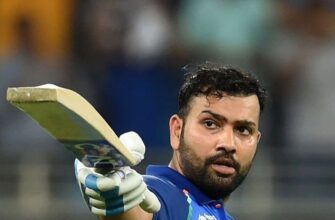The cricketing world often speaks of “new eras” and “transformative moments,” but for the ICC Women`s World Cup 2025/26, kicking off in Guwahati, these phrases feel less like hyperbole and more like a precise description. This isn`t just another tournament; it`s a testament to the quiet revolution that has been steadily elevating women`s cricket, bringing with it an unprecedented level of preparation, clarity, and, perhaps most importantly, narrowed competitive gaps.
Beyond the Warm-Ups: A League of Prepared Teams
Gone are the days when international women`s teams might arrive at a global showpiece event feeling “undercooked” or still searching for cohesion. The scene in Guwahati, just hours before the opening clash between India and Sri Lanka, painted a vivid picture of this evolution. India`s training session was a display of polished confidence – light, precise, and imbued with a palpable sense of readiness. Observing their bowling coach fine-tuning a spinner`s grip, or a fast bowler rhythmically hitting her marks, one could discern a team that knows its strengths and its objectives.
Sri Lanka, traditionally viewed as the underdog in such encounters, presented a slightly more subdued, yet equally methodical, approach. Their drills, from focused catching to intense net sessions, underscored a serious commitment. The occasional jibe between left-arm spinner Inoka Ranaweera and young Malki Madara, or the lighthearted debate over grip techniques, hinted at a team dynamic that is both professional and human – a sign of growing comfort and belief within the squad. This isn`t just about bat and ball anymore; it`s about a collective stride towards higher echelons of competitive sport.
The Numbers Don`t Lie: A Shift in the ODI Landscape
The most telling evidence of this transformation lies in the sheer volume of cricket played. Since the 2022 edition, which navigated the choppy waters of pandemic-disrupted schedules, the international calendar for women`s cricket has swelled. Sri Lanka, a team that remarkably hadn`t played an ODI in three years leading up to the 2022 World Cup, now arrives with 31 matches under their belt. This is not a trivial increase; it`s a foundation for growth, experience, and tactical refinement.
India, predictably, has been at the forefront of this surge, participating in 38 ODIs since the last World Cup, including 14 in the current year alone. Captain Harmanpreet Kaur articulates the impact with straightforward precision:
“We`ve played more ODI cricket after the last T20 World Cup. We have won most of the games. That has definitely given us a lot of confidence to do well in ODI cricket. We now have a lot of experience. This group has played together for so many years. There is a lot more clarity.”
This “clarity” is observable not merely in post-match statistics but in the nuanced body language, the confident stride into the nets, and the focused execution of spells. This World Cup, in essence, is not a restart; it`s a continuation of momentum, an acceleration of an already building narrative.
Spotlight on Talent: Debutantes and Veterans
The opening match also brings specific individual stories into sharp focus. For India, the dynamic middle-order batter Jemimah Rodrigues is set to make her maiden appearance in a 50-over World Cup. With 51 ODIs already under her belt, Rodrigues is hardly a novice, yet the World Cup stage offers a unique pressure and opportunity. Her recent form, including a maiden ODI century and crucial finishing exploits in tri-series and bilateral tours, positions her as a key player on what is expected to be a flat pitch in Guwahati. Expect her to aim for a memorable debut.
On the Sri Lankan side, the veteran left-arm seamer Udeshika Prabodhani shoulders significant responsibility. Her ability to swing the new ball with precision and maintain control during crucial powerplay overs makes her an invaluable asset. Her inswingers could particularly challenge India`s right-handed opener Pratika Rawal. While some concerns about match rustiness persist—her last ODI was in August 2024, and international cricket primarily saw her in the 2024 T20 World Cup—her impressive 2 for 26 from six overs in a warm-up match suggests she`s ready to deliver. Her captain, Chamari Athapaththu, speaks of her with evident respect:
“Udeshika is our strike bowler, she is the most senior player in my team. If I have to take a decision, sometimes I go to her for an opinion, and she helps me out. That is the [equation] we have. It`s a big privilege for me to play with her.”
The Stage is Set: Guwahati`s Humble Grandeur
The ACA Stadium in Guwahati, the 55th venue in India to host a women`s ODI, is poised to offer a typical subcontinental challenge. Following a period of cooler weather, the air has turned muggier, with temperatures expected to hover in the low 30s°C during play. The center pitch, with its minimal grass covering, promises a batting-friendly surface, setting the stage for a high-scoring encounter that could thrill spectators. India`s captain Harmanpreet Kaur noted the familiarity despite the novelty:
“No doubt it`s a quite new venue for us. But in India, many stadiums have a very similar feel, similar pitches, and we have played a lot of cricket in India. So we are taking it as an opportunity.”
This World Cup is not just about the big names and established powers; it`s also about the rising tide lifting all boats. While India`s Smriti Mandhana leads all batters with 2100 runs since the last World Cup, and Deepti Sharma dominates with 59 wickets, the improvements in teams like Sri Lanka are undeniable. Kavisha Dilhari`s 26 ODI wickets since 2022 demonstrate this growth, as does Harshitha Samarawickrama leading Sri Lanka`s ODI run-charts in the current calendar year, surpassing even the formidable Chamari Athapaththu. The gap is indeed shrinking.
A World Cup with a Difference: The Future is Now
The Women`s World Cup 2025/26 is more than a series of cricket matches; it`s a celebration of enhanced professionalism, deepened strategic understanding, and a competitive spirit that is more intense than ever before. As India and Sri Lanka step onto the field, they are not just competing for two points; they are showcasing the fruits of years of dedicated effort, growing investment, and an undeniable passion that is propelling women`s cricket into a truly golden age. This is the difference. This is the new era. And frankly, it`s about time.






